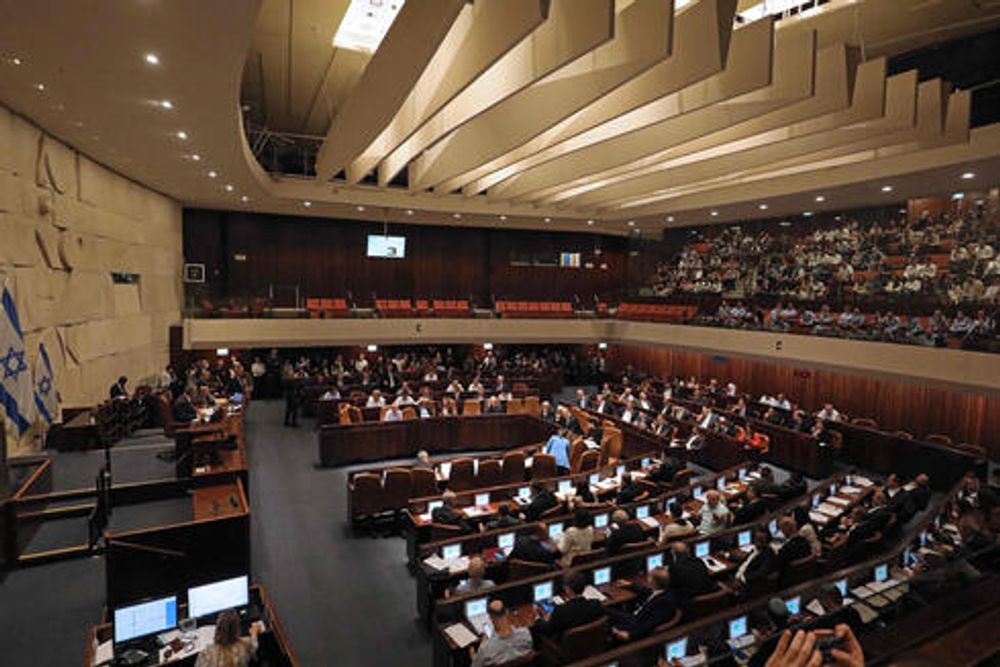
Elections for Israel’s 25th parliament will be held on November 1, after former prime minister Naftali Bennett and then-alternate prime minister Yair Lapid announced the dissolution of the government in late June.
However, as Israel heads to its fifth round of elections since 2019, many abroad – and some Israelis – are left wondering: How does the parliament in Israel, known as the Knesset, work?
The Knesset – translating from Hebrew to “gathering” or “assembly” – is a unicameral system of legislation, meaning it consists of one chamber, house or body. The United States, for example, is bicameral, with the US Congress divided into both the Senate and the House of Representatives.
As Israel’s only legislative body, the Knesset passes all laws, elects the president – mostly a ceremonial, figurehead position – and approves the cabinet.
Israel’s Knesset typically lasts for four years from the day it was elected, although elections can be – and, as of late, are frequently – called earlier.
How the Knesset is formed
There are 120 Knesset members, elected into office through a closed-list vote, meaning Israelis vote for political parties and not for specific people.
The 120 seats are assigned proportionally to each party based on the ballots, provided they meet the 3.25 percent threshold for entering the Knesset.
Unlike the United States, Israel does not have an electoral college, meaning each person votes for the party directly. While American voters elect individual representatives of district constituencies, there are no districts when it comes to Israeli elections – the entire country is a single electoral district insofar as the distribution of Knesset seats is concerned.
Any Israeli citizen over 21 may be elected into the Knesset, except for holders of high civil service positions, those completing their compulsory army service or convicted felons with a prison sentence exceeding three months.
A party must receive 61 seats to form a government, which has never happened in Israel’s history, so coalitions are formed instead.
After an election, the President chooses the Knesset member most likely to be able to form a viable government, which is not necessarily the leader of the party that received the most votes.
That person has 42 days to negotiate with different parties to try to form a government that holds 61 out of 120 seats, then present that government for a vote of confidence.
If the Knesset approves the government by a vote of at least 61 members, that person becomes Israel’s prime minister. If the Knesset fails the vote, or the person is unable to put together a government, elections must take place on the last Tuesday before the end of 90 days.
However, the president may also give a second person the option to form a government. For example, in 2021, after Benjamin Netanyahu was unable to form a government, then-president Reuven Rivlin handed the mandate over to Yair Lapid, calling on him to form a government – which he did successfully.
The second person chosen will have only 28 days to form a government or they will have to turn over the mandate back to the president. The president then turns to the Knesset, giving its members 21 days to find an alternative candidate for prime minister. If that doesn’t work, elections are automatically called.
The Knesset Plenum
Plenum sittings are usually held each week on Mondays, Tuesdays and Wednesdays and are conducted in Hebrew. However, members also have the right to speak in Arabic as well; speeches in Arabic are translated into Hebrew, according to the Knesset website.
The Knesset Presidium, consisting of the Knesset Speaker and their deputies, sets the Knesset’s agenda. The Knesset elects the speaker and the speaker’s deputies through open elections. Until the speaker is elected, the most veteran Knesset member who is not the prime minister, the prime minister-elect, a minister or deputy minister, serves as acting speaker.
One sitting a week is dedicated to debating motions for the agenda raised by Knesset members and the preliminary reading of bills submitted by individual members of Knesset or groups of members of Knesset.
Bills are submitted by the government (government bills), by one or more members of Knesset (private bills), or by a Knesset committee.
A bill can propose a new piece of legislation, or it may propose an amendment to – or the cancellation of – existing laws, and are advanced through readings. Every bill usually has four readings: a preliminary reading and three additional readings. However, no preliminary debate is held on a bill introduced by the government or by a Knesset committee.
Between each reading, there are debates within the Knesset committees, which prepare the bill for the next stage of legislation.
After passing the third reading, the bill becomes law.
Knesset cabinet
Israel’s cabinet consists of ministers, chosen and led by the prime minister, exercising executive authority in the country.
Should a member of Knesset be appointed minister, the Norwegian Law allows ministers or deputy ministers to resign from the Knesset but remain a minister, with their seat in the Knesset taken by the next person on the party’s list.
For example, in the 24th Knesset, Gaby Lasky replaced Tamar Zandberg on the left-wing Meretz list after Zandberg was appointed to the cabinet as Environmental Protection Minister.
If the minister leaves the cabinet, they are able to return to the Knesset to take the place of their replacement.
The cabinet meets every Sunday in Jerusalem – although there may be more meetings if the situation calls for it – with statements from the prime minister published on the office’s website shortly after.